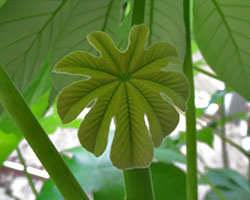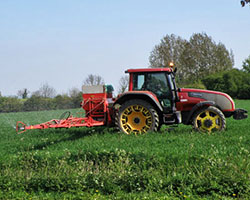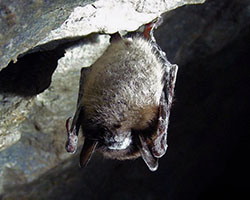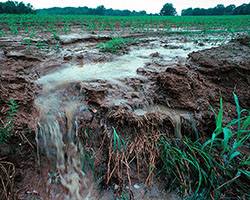How Are Phosphates Incorporated Into Aquatic Plants And Animals
Written past: Joshua Haussler and Karla Moeller
Phosphate Fix: The Sweet Side of Greens
Putting dirt in your oral fissure isn't a very popular pastime. But when information technology comes down to it, everything you eat comes from dirt and from air. This is truthful whether you eat rice, tomatoes, eggs, cows, or candy confined. Nosotros could even argue that humans come from dirt. We eat plants and some of us as well eat other animals, like chickens. Chickens swallow plants and insects, and many insects eat plants as well. Then everything comes back down to plants, which come from dirt and air.

Plants need sunlight, water, carbon dioxide, and nutrients to abound. Click for more than detail.
To grow, plants demand sunlight, water, and carbon dioxide from the air. Plants likewise need nutrients like nitrogen and phosphorus, which most plants get from the soil. There are more 7 billion people on the Earth and that number grows every day. Information technology'south important to remember about how we're going to feed everybody. This means that, no matter what we swallow, we demand to figure out more efficient ways to grow crops.
You may recollect that we've already figured it out. After all, while not anybody in the world gets enough food, most of us do. Many of us even waste product a lot of food. Yet, in a little over 100 years, the World'due south human population exploded from one.6 billion in 1900 to over 7 billion people. Such an increase in population wouldn't accept been possible without lots of food. And then how did humans manage to abound more than food?
Fertilizer From Air
In the early on 1900s two German chemists, Fitz Haber and Carl Bosch, were studying gases. They figured out how to utilise nitrogen from the air to make ammonia, a plant fertilizer. Using nitrogen too as phosphorus fertilizers allowed united states to abound enough food to feed billions of people. Nevertheless, using lots of fertilizer had an unexpected issue.

Over many generations, fertilization can crusade plants to have modest roots. Click for more detail.
With lots of nutrients available to plants, there was no advantage to larger roots. Plants with minor roots, but big leaves or more seeds, reproduced more and passed on their genes. This led to more and more than of our crops catastrophe up with minor root systems. We figured out a way to go on making plenty of nitrogen to use on these small rooted plants. Simply the situation is unlike for another food, phosphorus.
Yous may not take heard of phosphorus before, yet it is a very of import chemical element. It stiffens our basic. It'due south in our Dna. It's in adenosine triphosphate (ATP), which is the molecule that provides the energy for near every unmarried matter your cells do. Plants also need information technology to become energy from the sun.
Plants gather phosphorus from the soil in the form of phosphate. Phosphate is simply a phosphorus atom bonded to iv oxygen atoms. We apply tons of phosphate fertilizer on our crops to produce the yields we depend on. Nevertheless unlike nitrogen, phosphate can't come from the air. The renewal of phosphate depends on the movement of the Earth. Lands and continents have to shift and push upwards new rocks that concord phosphate. These changes have thousands or millions of years.

Phosphate used to be mined from bat guano (poop) only now phosphate is mined from phosphate rock. Click to enlarge.
The Future of Phosphate
Historically, phosphate was mined from bat guano, but bats can only poop so much. So now the majority of phosphate comes from phosphate rock. Yet, just like the bat guano, there's only so much phosphate rock to go around. In fact, it is projected that at current rates, we will run out of phosphate in the adjacent 50 to 100 years.
The man population is continuing to grow at faster rates. If we run out of phosphate for fertilizer, we won't be able to support a population at today's level. And we definitely won't be able to support the billions of additional people that will exist in fifty to 100 years.
As if that's smashing plenty, most of the phosphate in fertilizer isn't fifty-fifty used by plants. With their pocket-sized root systems, they can simply use a pocket-size amount at any given time. Much of the phosphate is done or blown away. In this form, it actually acts as a pollutant. If it makes information technology to lakes or streams, information technology causes algae to grow and then fast that they apply up the oxygen in the stream or lake and kill off the fish. Phosphate that stays in the soil tin can sometimes bind to the soil so strongly that information technology makes it very hard for plants to utilize it.
Finding Phosphate
Between pollution and express supply, we need to exist more careful with phosphate. At that place are two main ways we can attack this problem. We can capture actress phosphate and recycle it, or we can help plants accept up and use phosphate more effectively.

Lots of phosphorus is wasted because it is washed away with farmland runoff h2o. Click to overstate.
The commencement style, we would have to catch the extra phosphorus from all the farms before it reaches the streams. Then nosotros would take to dissever it from the dirt and other material we picked up with it, and send it back out to the farms. This procedure would allow us to continue to dump a bunch of fertilizer on crops again and over again, merely information technology would be very costly and time consuming.
The 2nd way involves changing plants, so that they are better at getting and using phosphate. Then we could use less fertilizer in the first place and yet get the same amount of nutrient.
For the past couple of decades, researchers have been working on the 2nd arroyo using genetics. They have modified the genes of plants so some plants are able to grow more roots that are longer. These plants tin can meliorate absorb phosphate from the soil so that we don't have to use every bit much fertilizer and there's less waste. If we can expand their piece of work to major crops, it could be the respond to our phosphorus problem.
Source: https://askabiologist.asu.edu/explore/phosphate-fix
Posted by: bellewliselther.blogspot.com

0 Response to "How Are Phosphates Incorporated Into Aquatic Plants And Animals"
Post a Comment